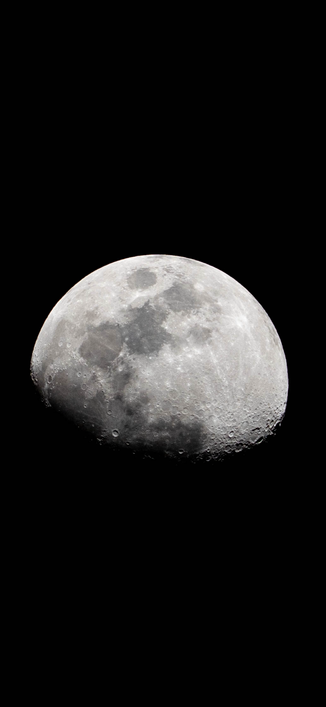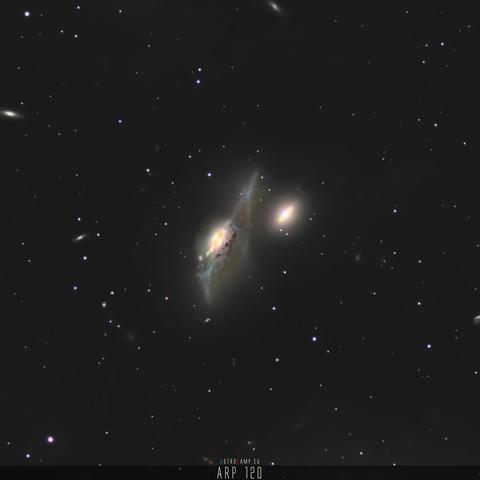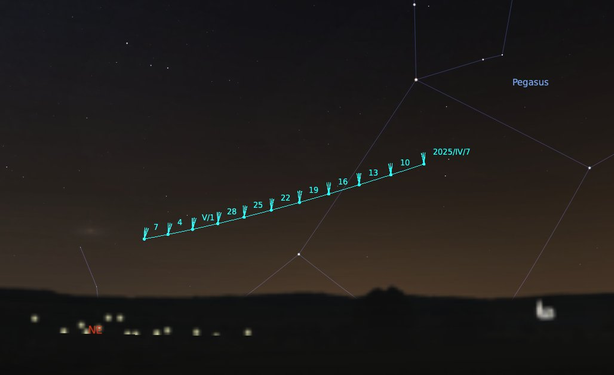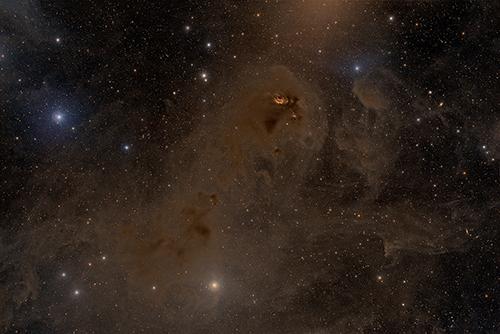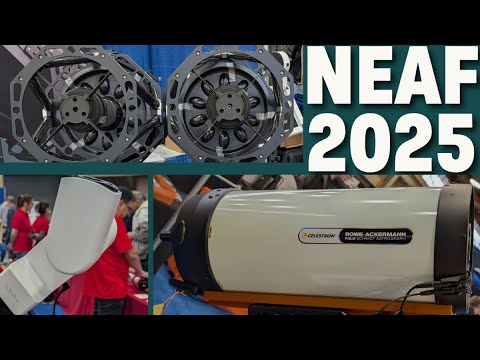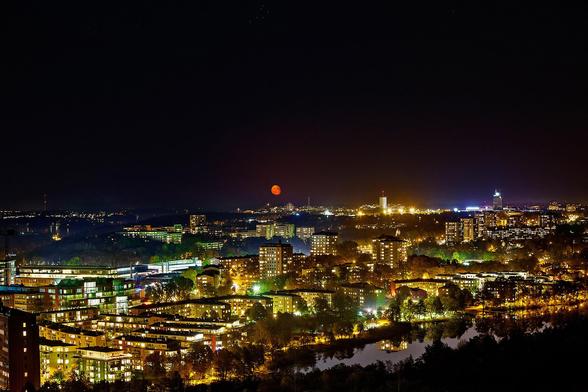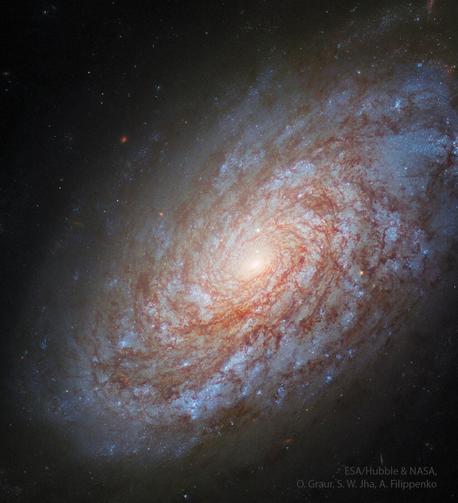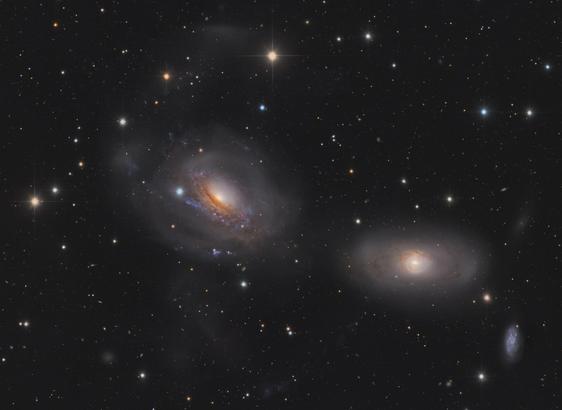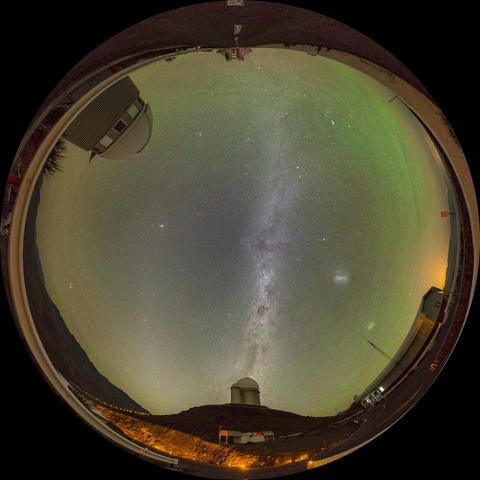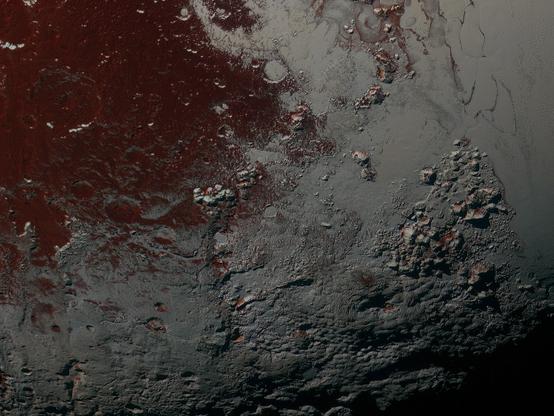Recherches récentes
Options de recherche
#astronomy
The Eyes Galaxies (Arp 120) are a pair of interacting galaxies located in the constellation Virgo, approximately 52 million light-years away. They reach their annual culmination at astronomical midnight and are best observed during spring in the northern hemisphere.
Detailed Information: https://astrocamp.eu/arp120
▼ Baader Apo 95 Travel Companion | SkyEye62AM '25
Looks like new #comet #SWAN25F is not going to get any above the E horizon before dawn. This is a projected track for the next month using Stellarium & orbital elements from Project Pluto's "Pseudo-MPEC" (https://www.projectpluto.com/swan.htm) View is at start of astronomical twilight.
Can you believe this epic image of Mars was captured in 1978?
Full size & more info: https://flic.kr/p/2qW4zyT
Credit: NASA/JPL/AndreaLuck CC-BY
Cloudy Pavonis mons and Noctis Labyrinthus
NASA Viking Orbiter 1 1978-01-14
Filters Red, Clear, Violet
Product IDs: f576a07, f576a03, f576a01
#UMPlus - Wide Field of Sh2-239
https://www.universomagico.net/2025/04/campo-amplio-de-sh2-239.html
This wide-field image by astronomer Warren Keller, in collaboration with his colleague Terry Hancock, shows the emission nebula Sh2-239, also cataloged as LBN 821. It is located toward the central part of the Taurus constellation, approximately halfway between the bright star Aldebaran alf Tauri, not visible in.....
#astronomy #space #astrophysics #astrophotography
Sci-Friday #221 - Space Elevator Stuff - Inkican
@startswithabang Okay, something about the Sun's evolution has always not quite clicked with me. I feel like it's obvious and I'm just overlooking something. Layman's terms as much as possible, please.
Your article:
"When a main sequence star, like the Sun, runs out of hydrogen in its core, its core becomes inert and the
star expands into a subgiant, while hydrogen fusion continues in a shell surrounding the core. Eventually,
the core contracts and heats up, where it can initiate helium fusion if the star's core gets hot enough,
which will only happen for sufficiently massive stars.”
It seems to me that the Sun as it is now is a more compact, dense object than a red giant. Why is it that helium fusion doesn't occur now? (In quantity, I imagine there's a bit going on)
Is it that hydrogen fusion is pumping too much energy into the core environment for the helium nuclei to fuse? Or that there's not enough helium there yet?
NEAF was a lot of fun. Met a lot of amazing people and had really nice converstations.
I compiled a bunch of my images and videos into a quick highlights video: https://www.youtube.com/watch?v=KXJxLsG5VUE
Maanfoto van de dag: Joining the Sisters. Fotoinfo: https://www2.lpod.org/wiki/April_7,_2025 #astronomie #astronomy #sterrenkunde #space #maan #moon #lpod
NGC 4414: A Flocculent Spiral Galaxy
https://apod.nasa.gov/apod/image/2504/Ngc4414B_Hubble_960.jpg
How much mass do flocculent spirals hide? The featured image of flocculent spiral galaxy NGC 4414 was taken with the Hubble Space Telescope to help answer this question. Flocculent spirals -- galaxies without well-defined spiral arms -- are a quite common form of galaxy, and NGC 4414 is one of the closest. Stars and gas near the visible edge of spiral galaxies orbit the center so fast that the gravity from a large amount of unseen dark matter must be present to hold them together. Understanding the matter and dark matter distribution of NGC 4414 helps humanity calibrate the rest of the galaxy and, by deduction, flocculent spirals in general. Further, calibrating the distance to NGC 4414 helps humanity calibrate the cosmological distance scale of the entire visible universe.
Attribution:
@science@lemmy.world @science@beehaw.org @space@beehaw.org @space@lemmy.world @science@lemmy.ml @space@newsmast.community @space@lemmy.ml #space #science #nasa #astronomy
Two Canadians among those honoured with major science award (The Globe and Mail (Ontario Edition)), Apr 07, 2025
https://globe2go.pressreader.com/article/281513641976874
Amateur Astronomie foto van de dag: NGC 3169: A Cosmic Dance of Gravitational Tides. Foto info: https://www.aapod2.com #astronomie #sterrenkunde #fotografie #sterrenkijken #aapod #heelal #universum #sterren #astronomy
Take me wandering through these streets
Where bright lights and angels meet... #astronomy https://alasky.cds.unistra.fr/Euclid/Q1/
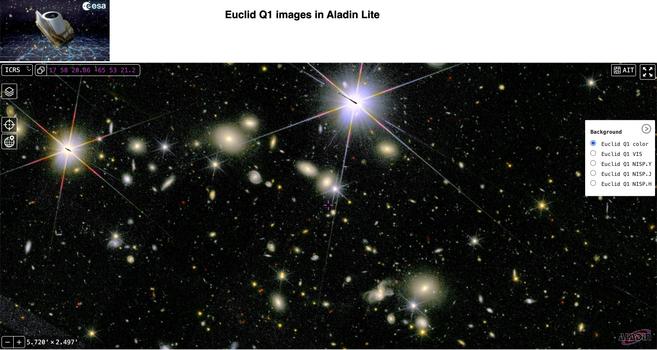
Leidse planeetonderzoeker Sebastiaan Haffert ontvangt New Horizons Prize 2025.
Hij krijgt de prijs voor het ontwikkelen van technieken waarmee telescopen corrigeren voor verstoringen in de aardatmosfeer.

The Madness of the Planets
Our home in the universe continues to rock out of control.
By Corey S. Powell

What's the magical green glow that dominates the sky in this pic of ESO’s La Silla Observatory in #Chile?
Known as airglow, it's a faint light emitted by the Earth’s atmosphere and it is only visible in the darkest of places. The green glow here is caused by oxygen atoms, but it can also be red or yellow, depending on the type of atoms or molecules that cause them.
Learn more: https://www.eso.org/public/images/potw2514a/
The stunning Mystic Mountain in the Carina Nebula, a three-light-year-tall pillar of gas, dust and newborn stars captured by the Hubble Space Telescope.
Credit: NASA/ESA/M.Livio(STScI)


